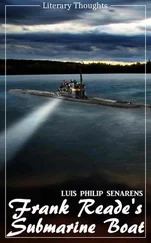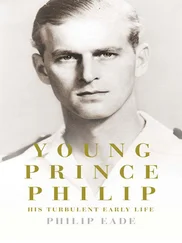Peter’s size (he was over six and a half feet tall) and his immense energy, curiosity and informality all contributed to his mythic status. Even so, and discounting Golovkin’s hyperbole, the Petrine legend has a core of truth. It was in his reign that Russia came to be universally regarded as a great power. He won famous victories, including one which most military experts count as one of the ten most decisive battles in European history. He founded new institutions, including an Academy of Sciences. He Westernized the dress of the elite, developed industries, and Europeanized institutions and manners to some extent. He also served in the ranks of one of his own regiments, always regarded himself as the servant of the Russian state, and has a genuine claim to be regarded as an enlightened monarch avant la lettre.
Yet, far from inventing Russia, he built on foundations laid by others. He suffered crushing defeats as well as winning famous victories. He opened a window on the West, and advanced down the shores of the Caspian Sea, but was ultimately thwarted in his attempts to break through to the Black Sea and into Central Asia. And Russia’s advance to the Pacific, completed in his reign, would have happened anyway
For Russians, Peter remains the most popular of historical heroes, but in the West his image is tarnished by the massive wastefulness which was the by-product of his imperial ambitions. Quite apart from casualties in his wars and in his suppression of rebellions, tens of thousands of labourers, prisoners of war, convicts and servicemen — Russians and non-Russians — perished in the building of St Petersburg and his ambitious canal-cutting projects to link the Neva to the Volga and the Volga to the Don, the latter begun in 1701, but never finished. And Peter could be as cruel as any of his predecessors. He participated in the investigation under torture of his son and heir for treason, and was present when the young man died of his injuries. No one could say that the Emperor shirked his responsibilities.
In formal terms Peter’s reign began in 1682, when he became tsar jointly with his older but less able and less energetic half-brother Ivan. The mutiny which followed was directed against members of Peter’s mother’s family, the Naryshkins, and against Westernizing ministers and foreigners, some of whom were lynched. Though Peter and Ivan reigned, power was now in the hands of Peter’s half-sister Sofia and her ministers. Chief among these was Vasilii Golitsyn, who directed two major campaigns against the Crimea. Both failed, and the failure precipitated another regime change and yet more violence. When calm returned and Sofia had departed, the seventeen-year-old Peter was at last free to exercise his autocratic powers. Yet he preferred instead to prolong his adolescence.
His childhood games came to be played on an ever larger scale, and more realistically. They involved bigger and bigger boats — even the building of seagoing ships — and real soldiers rather than toy ones, with live ammunition and real casualties. So when the twenty-two-year-old Peter eventually went to war in 1694, marching as a bombardier with his own artillery train, he was no stranger to military pursuits.
Peter’s target in the campaigns of 1695 and 1696 was Azov, the formidable Turkish citadel which blocked Russia off from the Black Sea and the western flank of the Caucasus. The attempt of 1695 was not successful, but Peter was as yet a strong, young Sisyphus and he cheerfully resolved to try again next year, encouraged by his now being a member of an anti-Turkish coalition that included the Habsburg Emperor, who promised to help with engineering and explosives expertise, the King of Poland and the Doge of Venice, one of whose subjects, an expert in building and handling galleys, Peter was soon to commission as vice-admiral in his service. Intelligent as well as persistent, Peter already understood that battles and storms were the lesser part of war: that thorough preparation, careful planning and good logistics were the bases of success. And so we find him inspecting the arms-manufacturing base at Tula at the conclusion of the campaign, and early the following year he was at Voronezh, upriver from Azov, building a fleet of galleys and barges which was to neutralize the Turkish fleet. He also planned to build frigates in the yards there to exploit victory when it came.
And this time the operation did succeed. The pasha commanding Azov surrendered it in July. Since Ivan had died two months before this, Peter returned to Moscow as sole tsar and autocrat. Yet Moscow was not to detain him long. In March 1697 he began his famous, and in part notorious, tour of Europe, sometimes presenting himself as the young ruler of the new power of the north, sometimes travelling incognito. He visited states in central Germany, England, Venice and Vienna, but his particular goal was Holland, where he set out to master all the secrets of modern shipbuilding. He was already intent on making Russia not only a great European power but a great sea power, and to do this he had to achieve what Ivan IV and Alexis had both failed to achieve: a breakthrough to the Baltic.
Arriving in Moscow in October 1696 he found that another revolt of musketeers had been suppressed in his absence. He felt obliged to supervise the interrogation of those involved, and, following his principle that no subordinate should be ordered to do anything that the Tsar himself was not prepared to do, whether in carpentry, battle, hammering sheet iron, or execution, he himself took part in the proceedings, which involved torture and killing. High treason was not, after all, a crime for which it was politic to show clemency. The proceedings were not to be concluded until 1705. Meanwhile, once a long-term truce with the Turks was in the offing, Peter turned impatiently to drive Sweden, the strongest power of the north, away from the eastern shoreline of the Baltic.
He did so in coalition with the kings of Denmark and Poland, and with the promised support of a fifth column of Swedish subjects in Livonia, headed by a local baron called Patkul, who, like others of his class, was enraged by recent and extensive transfers of land and peasants from the private domain to the Swedish crown. Tens of thousands of Russian troops were prepared for the campaign, ready to march as soon as news should arrive of the signing of an agreement with the Turks. It came in August 1700, but by that time Peter’s coalition had fallen to pieces. Denmark, which had begun aggressively by invading Swedish Holstein, had been forced to seek peace and withdraw from the war. The Polish king had begun well, sending his Saxon troops in against Riga, but the attack failed. The Russians had therefore to fend for themselves.
Still, their prospects looked reasonably good. Peter had over 60,000 troops ready to descend on Narva, which, if he could take it, would give him the access he needed to the Baltic Sea. Its walls were strong but its garrison was relatively small, and so the siege began — and with it a trial of strength between the two rival monarchs. Peter was twenty-eight years old and fresh from victory against the Turks. His opponent, Charles XII, was ten years his junior and virtually untried. On the other hand Sweden had long been recognized as a power to be reckoned with, while Russia was still regarded as a neophyte. The struggle between them would decide the supremacy of northern Europe.
The first clash of arms came in November, when Charles led a Swedish force to the relief of Narva. Though outnumbered three to one, he immediately took the initiative, launching an attack which wrong-footed the Russians. The day ended with a stinging rout for Peter’s forces, although the Tsar was not present in person, having returned to Moscow for Christmas. The Russian losses were serious: 8,000 men and nearly 150 guns. That encounter and the long struggle which followed reflected the two monarchs’ quite disparate military talents. Charles, by far the superior field commander, was master of the unexpected. Peter, having no talent as a tactician, depended on his generals (in the case of du Croy, whom he left in command at Narva, a rather careless one). In fact, given his reliance on councils of war, it could be said that this Russian autocrat governed military operations by committee. Peter’s strength lay as an organiser and ener-giser. The virtual destruction of his northern army galvanized him into raising another. Fortunately for him, Russia was able to meet all his demands for men and resources. And fortunately, too, he and his generals developed a talent for exploiting the adversary’s difficulties. 2
Читать дальше





![Stephan Orth - Behind Putin's Curtain - Friendships and Misadventures Inside Russia [aka Couchsurfing in Russia]](/books/415210/stephan-orth-behind-putin-s-curtain-friendships-a-thumb.webp)





